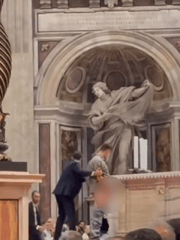Question 1: In which part of the body are red blood cells produced?
Question 2: The Year 2000 Problem, also known as the Y2K problem, was a widely feared computer bug. What issue raised concerns?
The Y2K problem stemmed from the practice of using two-digit representations for years in computer systems. As the year 2000 approached, there were concerns that computers would interpret it as 1900, potentially causing malfunctions and miscalculations.
Question 3: Who is the composer of the famous classical piece "The Four Seasons"?
Antonio Vivaldi was an Italian composer and violinist born in 1678. "The Four Seasons" is a group of four violin concertos, each depicting a different season. The concertos were published in 1725 and remain among the most popular classical music pieces to this day.
Question 4: Who is known as the father of history?
Herodotus, a Greek historian, is regarded as the father of history due to his extensive work in documenting and recording historical events in his book 'The Histories.' He was born in 484 BC and died in 425 BC.
Question 5: When did Australia produce its last locally-made car?
Holden, a subsidiary of General Motors, was the last car manufacturer to operate in Australia. The company produced the last locally-made car, a red Commodore, in October 2017 in Adelaide.
Question 6: What is the largest organ of the human body?
The skin is not only the largest organ, but also serves multiple functions, such as acting as a protective barrier, regulating temperature, and providing a sense of touch.
Question 7: The ancient Sumerian city of Ur was located in which present-day country?
Ur played a pivotal role in ancient Mesopotamian civilization and is believed to have been one of the world's first metropolises. The city's archeological site is located in present-day southern Iraq.
Question 8: In which city is the famous La Sagrada Familia church located?
La Sagrada Familia, designed by renowned architect Antoni Gaudi, is an iconic church located in Barcelona, Spain. Construction began in 1882 and is still ongoing, with an expected completion date in 2026.
Question 9: What is the most widely cultivated crop in the world?
Maize, also known as corn, is grown around the world and is a staple food in numerous countries. It is used not only for human consumption but also for animal feed, biofuel, and various industrial purposes.
Question 10: When was the Great Wall of China constructed?
The Great Wall of China was constructed in different sections and during various dynasties, with some parts dated back to the 7th century BC. The most famous section was built between 220 and 206 BC under the reign of the first Emperor of China, Qin Shi Huang.






Red blood cells, also known as erythrocytes, are produced by stem cells in the bone marrow. They play a crucial role in carrying oxygen from the lungs to the rest of the body.